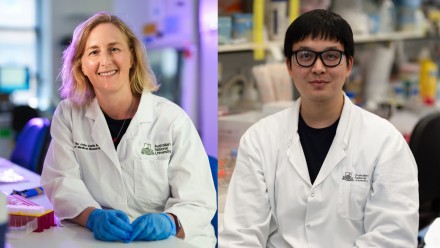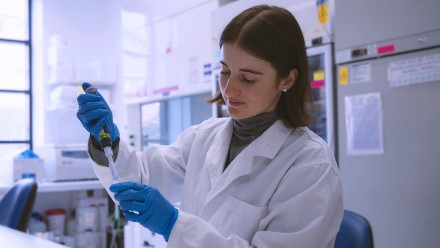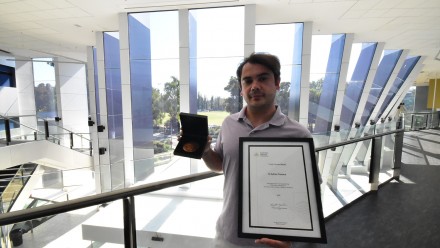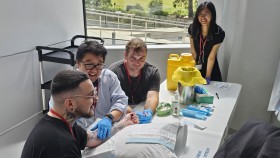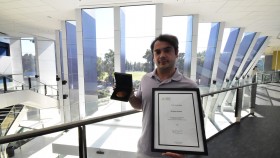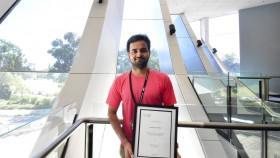At the cutting edge of bleeding control
Since the dawn of history, severe bleeding, or haemorrhage, has been one of the deadliest situations that could happen to a human’s life.
While our body has a natural response to manage blood loss, the process does not always efficiently stop bleeding and keep us alive.
To date, haemorrhage remains the leading cause of maternal mortality, the leading cause of combat casualties, and the second cause of death in civilian trauma worldwide.
To save lives from haemorrhage, people have been seeking materials with favourable characteristics in bleeding management over the centuries.
In first-aid and surgery scenarios, topical haemostatic (“blood-stopping”) agents based on such materials have played a pivotal role in controlling bleeding and preventing complications.
Nevertheless, despite years of iteration, existing haemostatic agents are still not free of drawbacks. Some cause delayed wound healing, others lead to damage to surrounding tissues. As a result, the demand remains high for researchers worldwide to find something better.
Dr Elmira Mohamed at The John Curtin School of Medical Research (JCSMR) is amongst young innovators who try to give the world the next generation of haemostatic agents.
And her approach to achieving the goal? By combining biomaterials and nanotechnology together.
Down to the nanoscale
After getting her bachelor’s degree in Materials Engineering in Iran, Elmira decided to change her major.
“I realised I am more passionate about medicine and saving lives,” she said.
So for her master’s program, Elmira delved into biomaterials and started developing medical materials such as implants and wound dressings.
During her PhD under the supervision of Associate Professor Takuya Tsuzuki, Professor David Nisbet, and Dr Lucy Coupland, Elmira learned about the strengths and shortcomings of commercialised haemostatic agents and became determined to bring ‘new blood’ to the market.
To her, up to a point, the potential solution lies within where people millennia ago thought it might be.
“In ancient times, our ancestors used plant leaves and bark to cover their wounds. It may seem like they had no other choice,” she said.
“In my project, however, I showed their only choice is, up to a point, still the best choice.”
The choice she refers to is cellulose, a key component of plants and the most abundant organic polymer on planet Earth.
Apart from its ready availability, cellulose also draws Elmira’s interest because the haemostatic properties of cellulose fibres can be enhanced by nanotechnology.
Using a green process, Elmira and her collaborators at ANU and Canberra Hospital extracted cellulose fibres from plants and ground them into what are known as Cellulose Nanofibers (CNFs).
Comparing the haemostatic properties of different CNFs, the researchers identified the relationship between the form of CNFs and their potency in promoting blood clotting.
“In nanoscale, the interaction between blood components and cellulose fibres increases,” explained Elmira. Eventually, the team managed to get optimised CNFs with a diameter of less than 100nm.
“When applying these optimised CNFs on the bleeding injury, we found that the clotting time and blood loss reduced significantly.”
In further studies using a mouse liver injury model, the application of CNFs on the wound reduced blood loss by 38%, outperforming the gold-standard products in the market by 2.5 folds.
To the researcher’s delight, these CNFs also induced minimal scarring and inflammations. They degrade slowly in the body over time.
These properties suggest that CNFs could potentially serve as a novel effective haemostatic material in the market—if everything went smoothly further down the road.
Up towards commercialisation
Despite the promising findings and positive feedback from clinicians and the industry, Elmira was concerned about the future of her results as the commercial development of innovation is a long and arduous path.
“As a realistic person who has seen failed experiments and unstable academic jobs, my ultimate goal is to always have passion in my work as if that is the most important thing in the world, no matter where I am and what I am doing,” she said.
That said, the motivated researcher could not reconcile herself to leaving just a thesis and a couple of papers to the field.
“When I heard about a grant supporting research for translation into the market, I did my best to prepare an application because I believed the project deserves more attention and support.”
The Discovery Translation Fund (DTF) was set to assist the commercialisation of new technologies and innovations from The Australian National University (ANU), the University of Canberra (UC), and Charles Sturt University (CSU). It aims to help bridge the critical funding gap between discovery research and the commercial development of new technologies or the establishment of new ventures.
With substantial support from the ANU Technology Transfer Office for preparing the application, Elmira submitted the grant application—her very first one—and won the $50k grant.
“Being successful in the DTF grant boosted my motivation once again for this project,” remarked Elmira, now a Postdoctoral Fellow at JCSMR.
“With the support of this grant, we can clarify the efficacy of our product in the bleeding scenarios that are more complicated to manage.”
Furthermore, the team seeks to verify the long-term safety of CNFs in the body so that they can have “a better chance in performing successful clinical trials and getting investment from commercial partners,” she said.
Achieve with macro expertise
As an early career researcher in an interdisciplinary field, Elmira deems her academic experience as a challenging journey. While a wide range of knowledge and expertise is required to proceed, it’s simply impossible for an individual to know all.
During the years, Elmira said she had asked her colleagues from engineering and medical backgrounds “too many questions”. Likewise, when she presented her work in Canberra Hospital, Elmira received numerous questions from the doctors and nurses.
“But the best thing about it is that you constantly learn,” she said. Over time, a collective, macro form of expertise gradually builds up through openly communicating with and learning from each other.
“As a Biomaterial researcher, I am not a full expert either in Materials or Medicine, but I felt more like an ambassador who can speak both languages and understand the cultures of both sides,” Elmira said, “I hope I was a good ambassador for this project.”
“I enjoyed every moment of my PhD, even challenges and difficulties, and having a supportive group of supervisors from different disciplines—engineers, medical researchers, and medical clinicians—made the experience more enjoyable.”





